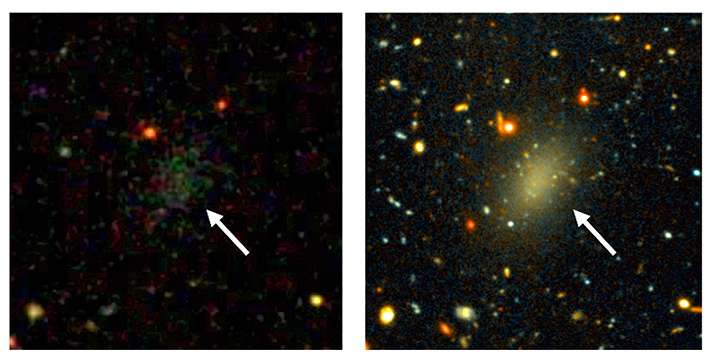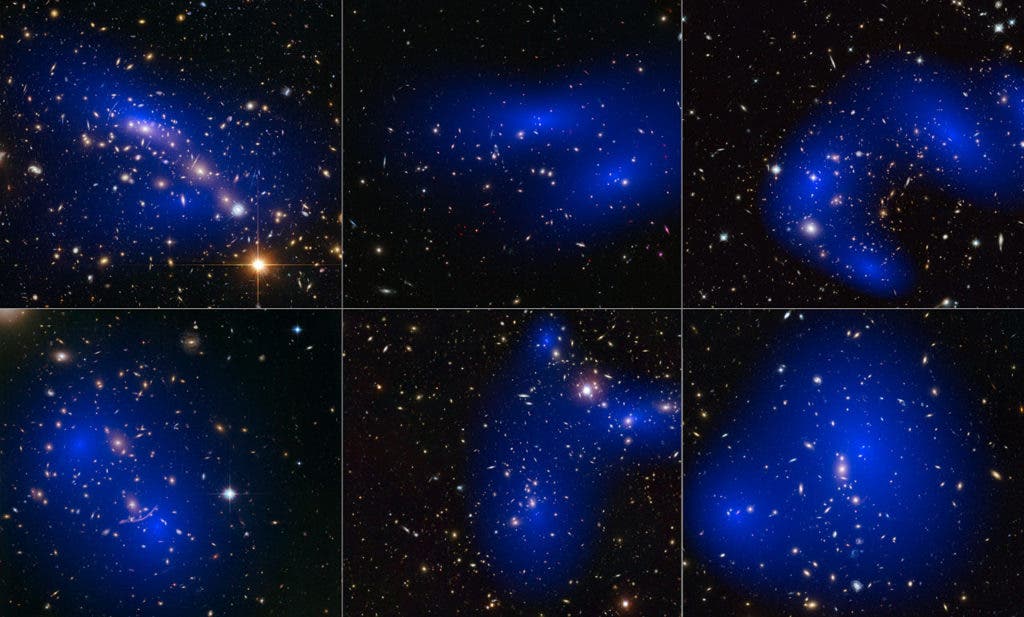
Both images show the Dragonfly 44 dark galaxy, only on the left it’s much fainter (Sloan Digital Sky Survey), while the on the right (Gemini telescope) was taken with a very long exposure. Credit Pieter van Dokkum, Roberto Abraham, Gemini, Sloan Digital Sky Survey
A new Milky Way-sized galaxy has been found nearby in the Coma Berenices constellation – but this galaxy is more than meets the eye, astronomers say. Though the diffuse blob is big enough in size and mass, the galaxy holds very few stars. It should have been ripped apart millions of years ago in these conditions, but some mysterious force is holding it together. It didn’t take too long for scientists to discover what it was.
Using the W.M. Keck Observatory and the Gemini North telescope, both stationed in Hawaii, the international team of researchers measured the velocities of the stars harbored by the Dragonfly 44 galaxy. These velocities are used to calculate the mass of galaxies.
“Amazingly, the stars move at velocities that are far greater than expected for such a dim galaxy. It means that Dragonfly 44 has a huge amount of unseen mass,” said co-author Roberto Abraham of the University of Toronto.
Judging from the data, it seems Dragonfly 44’s mass is around 1 trillion times the mass of the sun or very similar to that of the Milky Way. Unlike our own galaxy, however, less than one percent of Dragonfly 44’s mass is made of stars or what astronomers call “normal” matter. The rest of the 99.99 percent has to be dark matter — an elusive form of matter that can’t be directly seen, not with our current means at least, but whose influence can be felt.
While finding a galaxy made almost entirely out of dark matter is very rare, it’s not new to science either. The scientists studying Dragonfly 44 say ultra-faint dwarf galaxies have a similar composition. Yet, galaxies belonging to this class are typically 10,000 times less massive than Dragonfly 44. Our own galaxy, it seems, might actually be unique, belonging to a yet unidentified class of dark galaxies.
“We have no idea how galaxies like Dragonfly 44 could have formed,” said Abraham. “The Gemini data show that a relatively large fraction of the stars is in the form of very compact clusters, and that is probably an important clue. But at the moment we’re just guessing.”
Yes, scientists have no idea how Dragonfly 44 got there or how it formed because … dark matter. Until we can unravel its nature, mysteries like Dragonfly 44 will remain partly unsolvable, which is why thousands of scientists around the world are dedicating their careers to untangling this invisible matter.
“Ultimately what we really want to learn is what dark matter is. The race is on to find massive dark galaxies that are even closer to us than Dragonfly 44, so we can look for feeble signals that may reveal a dark matter particle,” said Van Dokkum, the Sol Goldman Family Professor of Astronomy and Physics at Yale and co-author of the paper published in the Astrophysical Journal Letters.
Next, Van Dokkum and colleagues hope to find more such galaxies closer to home. They have a hunch that when dark matter interacts with itself, it generates signature ultraviolet light. In a ‘normal’ galaxy like the Miky Way, these signals are drowned by the noise of stars and dust, but a “dark galaxy” should be quite enough to maybe show us the first direct evidence of dark matter.
“We think that this galaxy is representative of an entirely new class of object,” van Dokkum said. “It’s not some weird singular galaxy that’s just a curiosity.”










